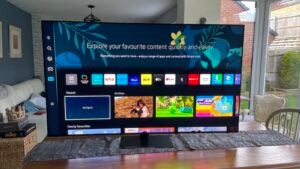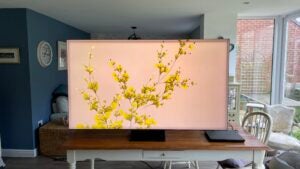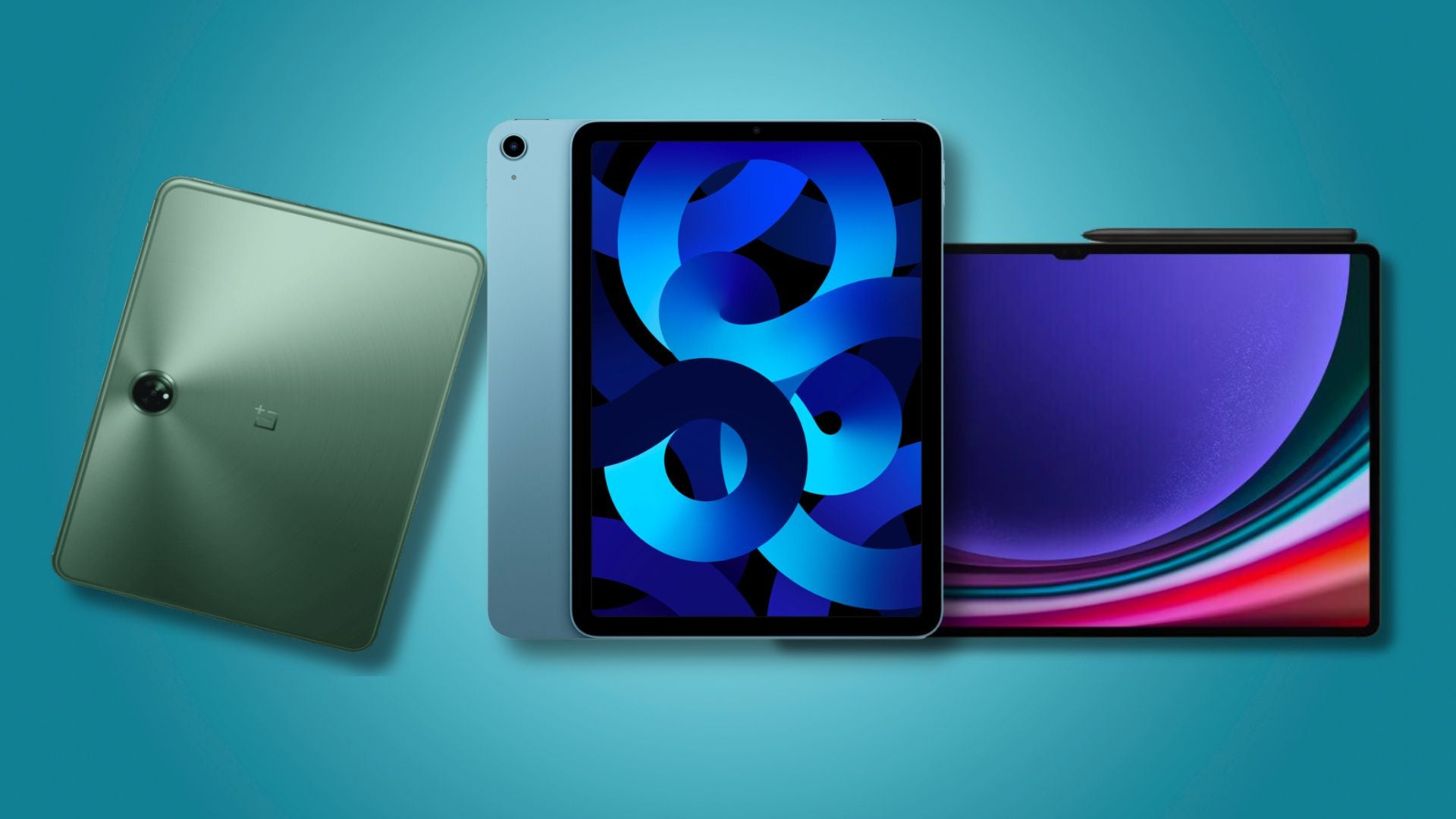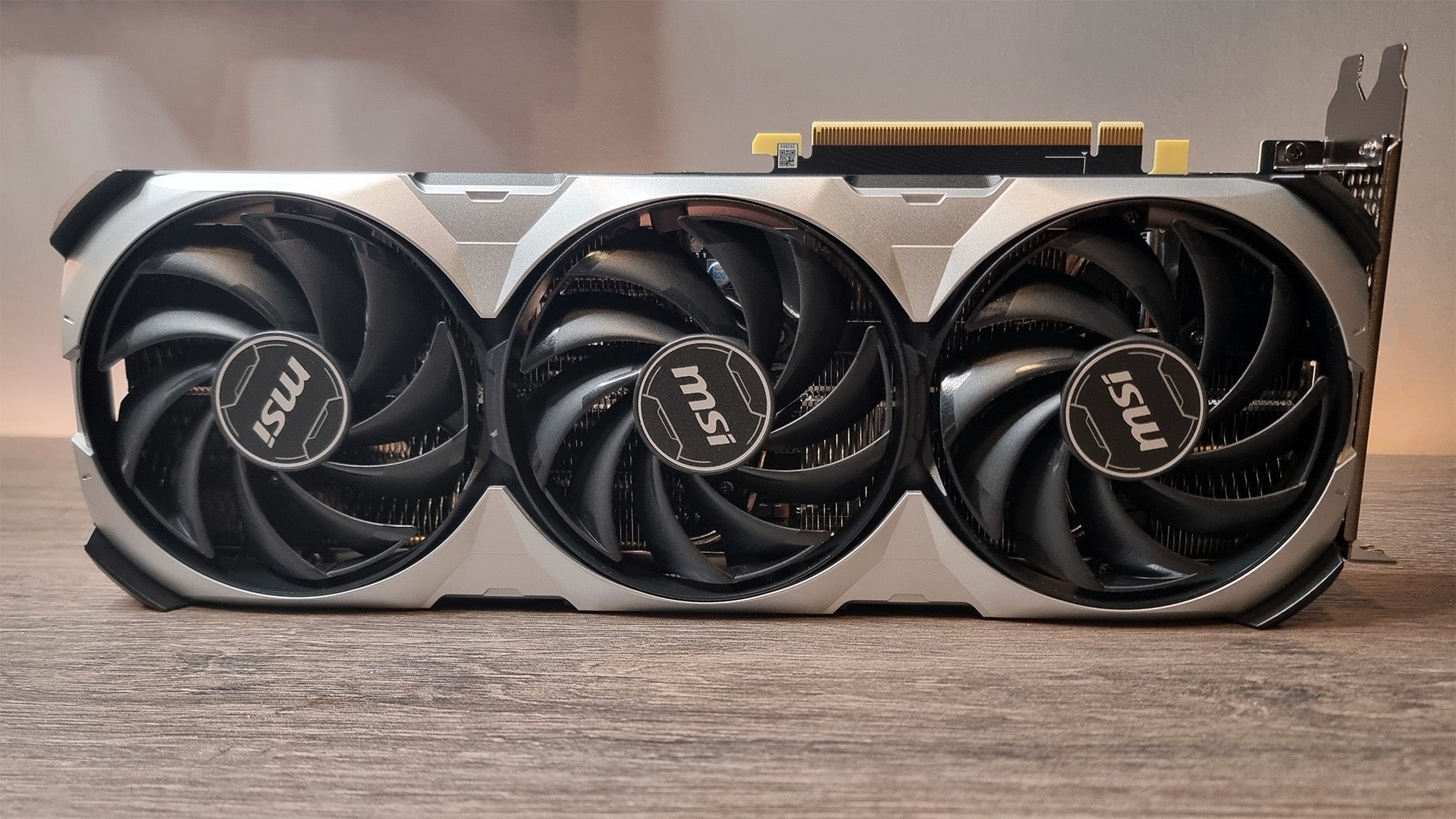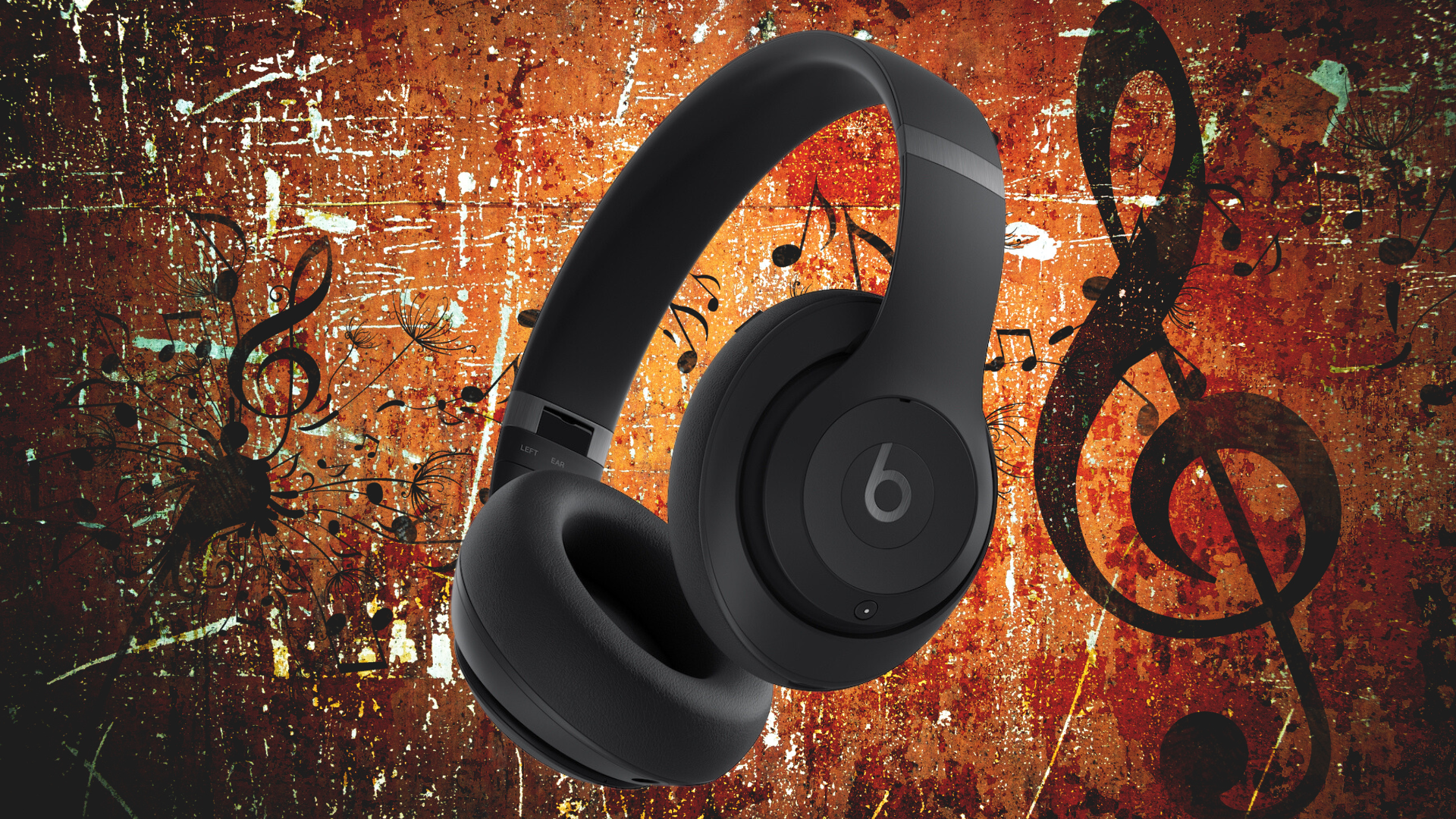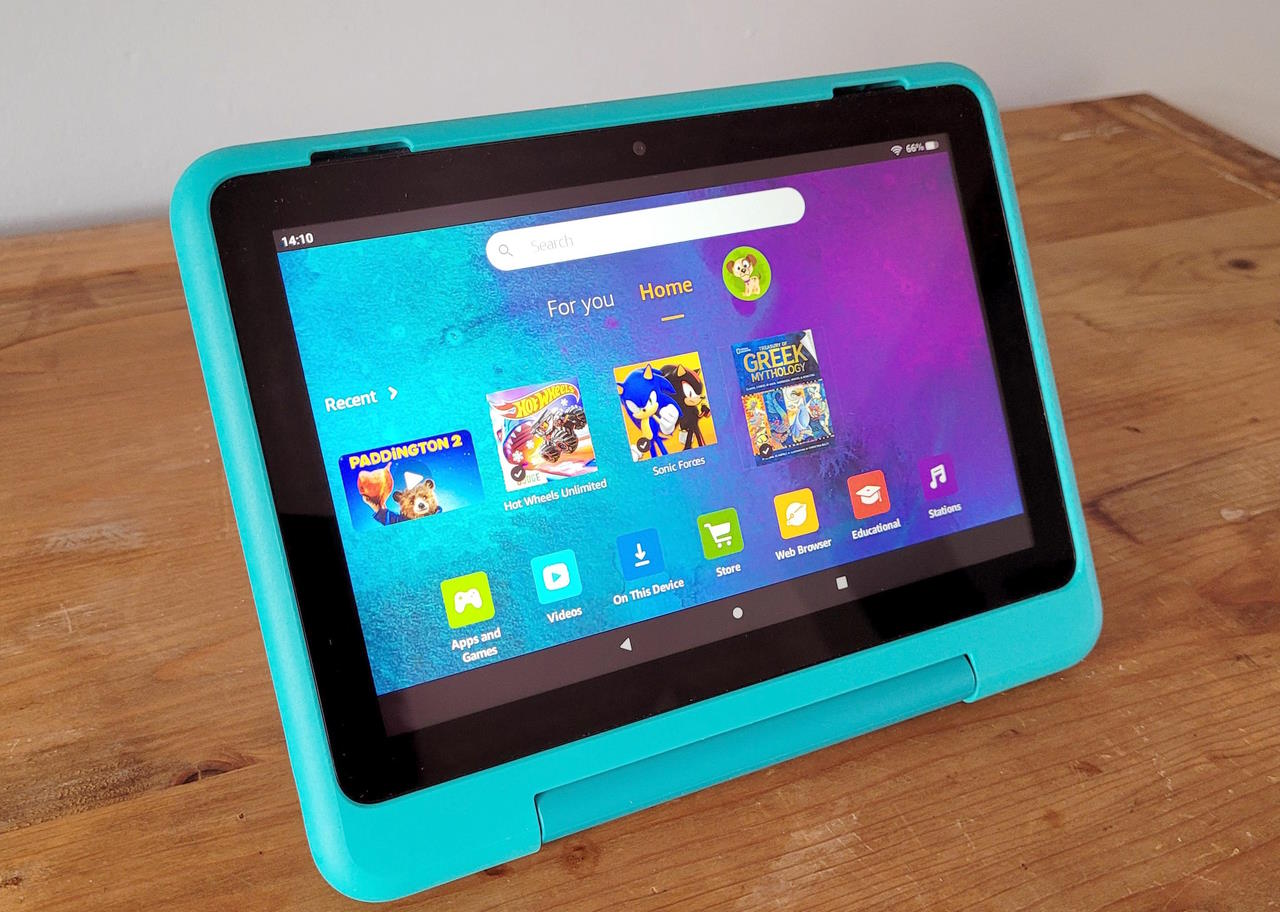Best Samsung TV 2024: From budget 4K sets to 8K QLEDs
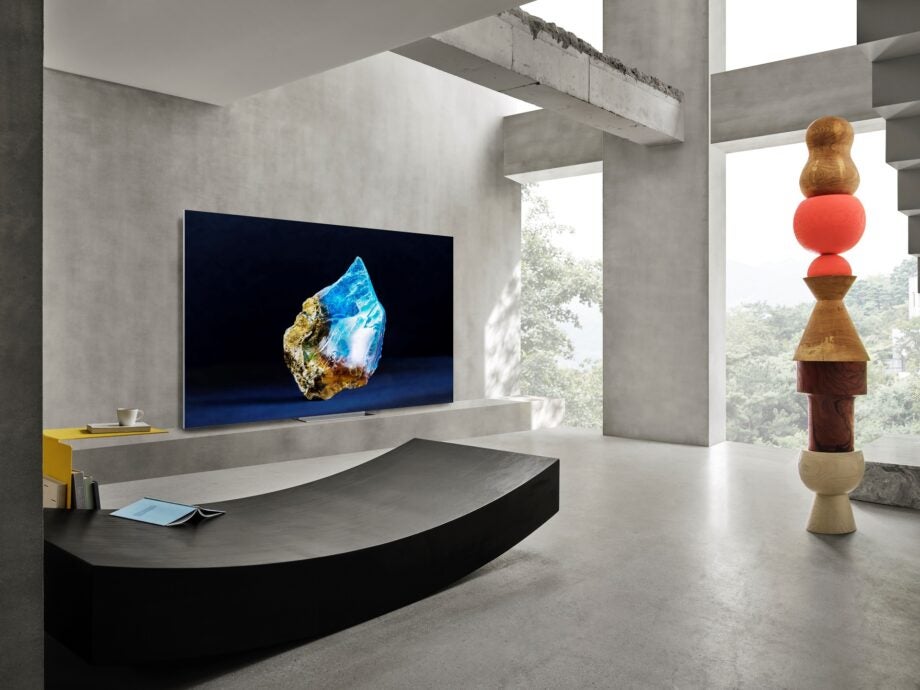
Samsung is one of the biggest TV manufacturers in the world, dominating sales of TVs for several years in a row, so it stands to reason that you’re looking for another Samsung TV to put into your home.
We’ve reviewed many Samsung TVs over the years, assessing each model extensively over several days to gauge their performance, as well as appraise their respective feature sets. We use calibration discs such as Spears and Munsil to test TVS, as well as using devices such as a Leo Bodnar input lag tester to accurately test input lag for games.
We focus on areas such as picture quality, how good its built-in speakers sounds, build quality, and how easy its interface is to navigate. From that we’ll come up with an assessment of how good the TV is and whether it’s good enough to be recommended. If it is, then you’ll find it on this list of the best Samsung TVs.
We update this page throughout the year as we review more and more sets from Samsung, with the most recent 2024 sets haven’t made the list in our current update. However, if a TV from Samsung doesn’t tickle your fancy, be sure to check our lists of the best LG TVs, as well as the best Panasonic TVs and selection of the best TVs in general.
Best Samsung TV at a glance
- Best Samsung 8K TV: Samsung QN900D – check price
- Best Samsung 4K TV: Samsung QN95C – check price
- Best Samsung OLED TV: Samsung S95D – check price
- Best big Samsung TV: Samsung QE98Q80C – check price
How we test
Every TV we review is put through the same set of tests to gauge its picture performance, usability, and smart features.
Tests are carried out over several days and are done by eye but supported with technical measurements. Testing by eye involves an expert watching a wide range of material to understand and determine a TV’s performance in fields such as brightness, contrast, motion processing, colour handling and screen uniformity.
We’ll consider the design of the TV in terms of build quality, study the spec sheets and see if the TV’s connections are up to spec, as well as playing video and audio content to ensure that the set handles playback as it claims. We also take note whether a product’s compatible formats and features are in line with industry trends or not to gauge whether it’s relevant for you.
Comparison to other related and similarly priced products is also important, to see if it’s missing any vital features and whether it impresses as a whole. After all this, we’ll come to a judgement on how the TV performs as a whole.
If you want to learn more, please visit our detailed page about how we test televisions.
- Stunningly bright, colourful pictures
- Groundbreaking LCD black levels
- Excellent gaming support and connectivity
- No Dolby Vision support
- A few backlight niggles
- Outstanding 8K and upscaled 4K pictures
- Impressive brightness and power management
- Spectacular design and excellent connectivity
- It puts a serious dent in your bank account
- Some backlight distractions in Standard mode
- Sounds a bit feeble for such a premium TV
- Stunning brightness and contrast
- Outstanding gaming support
- Beautiful futuristic design
- Some slight instability with HDR in Standard mode
- No Dolby Vision HDR support
- Slight black crush, especially in Standard mode
- Good price for such a huge and effective TV
- Impressive black levels and local dimming
- Excellent gaming support
- Blooming becomes visible when viewing off axis
- Sound not as powerful as such a big TV deserves
- No Dolby Vision support

Samsung QE75QN900D
Best Samsung 8K TV
Pros
- Outstanding 8K and upscaled 4K pictures
- Impressive brightness and power management
- Spectacular design and excellent connectivity
Cons
- It puts a serious dent in your bank account
- Some backlight distractions in Standard mode
- Sounds a bit feeble for such a premium TV
Samsung still believes that 8K will take off, and with its QN900D, it’s certainly putting its best foot forward to bring the format to a wider audience.
It is without doubt the best 8K TV that we’ve reviewed from Samsung, and considering they regularly get five-star awards, that’s an impressive feat. Improvements have been made to how much brightness the TV is capable of, with the QN900D able to produce 2445 nits on a 10% window in its Movie mode, which is much brighter than the 2096 nits the QN900C was capable of.
That level of high brightness helps to produce impressively bright and colourful HDR images, though as always with Samsung, we still find the lack of Dolby Vision support to be disappointing considering how widespread it is.
The upscaling performance is brilliant, and with little native 8K content out there it has to be. We noticed a big jump up in detail with 4K content, with Samsung’s AI processor able to bring out all the detail within an image and sharpen it without producing a fake-looking image or overemphasising any noise in the image. It genuinely looks better than any 4K TV we’ve seen.
For the gamers out there, our reviewer measured input lag at a fast 11ms, and with VRR support in HDMI VRR and AMD FreeSync Premium Pro, the input lag can be brought down ever further. All four of its HDMI inputs supporting 4K 120Hz gaming, so you’ll get a high level of gaming performance with any of the HDMI inputs.
We would suggest leaving the eARC input to add in a soundbar. While the QN900D’s sound system tracks sounds accurately across the screen, it’s not able to generate enough bass to give soundtracks heft and excitement.
Reviewer: John Archer
Full Review: Samsung QE75QN900D

Samsung QE65S95D
Best Samsung OLED TV
Pros
- Stunning brightness and contrast
- Outstanding gaming support
- Beautiful futuristic design
Cons
- Some slight instability with HDR in Standard mode
- No Dolby Vision HDR support
- Slight black crush, especially in Standard mode
After nearly 10 years of ignoring OLED technology, Samsung decided to create its own panel technology in QD-OLED and with the S95D it’s arguably struck gold.
The first and second-gen QD-OLEDs from Samsung were enjoyable, though we found they had flaws. The S95D appears to be a big improvement on what came before. It is the brighest OLED TV we’ve reviewed yet, hitting 1798 nits on a 10% window that’s more than the likes of the Panasonic MZ2000 and LG G3 OLED
That level of brightness helps the TV produce incredibly rich colours with contrast that brings out the detail in both dark and light areas of the image. Our reviewer also felt that the anti-glare screen technology was impressively implemented on this TV, though it does mean that dark areas do take on a slightly grey appearance.
The Tizen interface has been refined with new sections to help recommend suitable content that matches your tastes, and there’s now the option of creating multiple profiles for multiple in the house. For the gamers out there we measured input response at 9.8ms, while all four HDMI 2.1 inputs support 4K 120Hz through the One Connect box and with 144Hz supported for PCs.
The sound system supports Dolby Atmos, and like with Samsung’s other OTS speaker systems, it can be very good at placing effects on and around the screen. However, it can’t push that sound forward into a room, and volume is a little limited in terms of how loud it can do.
Reviewer: John Archer
Full Review: Samsung S95D OLED
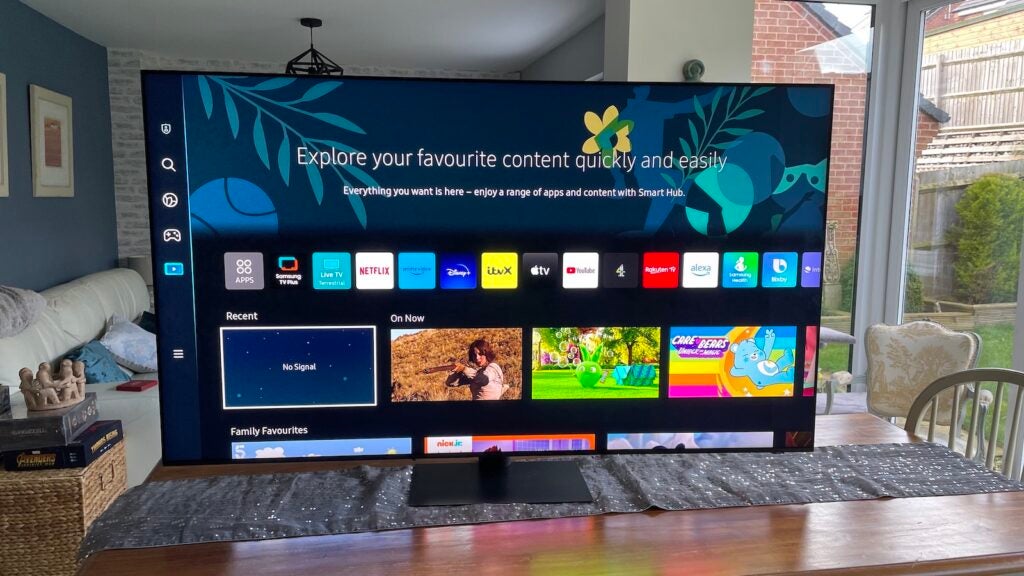
Samsung QE65QN95C
Best Samsung 4K TV
Pros
- Stunningly bright, colourful pictures
- Groundbreaking LCD black levels
- Excellent gaming support and connectivity
Cons
- No Dolby Vision support
- A few backlight niggles
The Samsung QE65QN95C is the brand’s flagship 4K TV, offering an alternative to the next generation of OLED 4K TVs from the likes of LG, Panasonic and Sony.
The picture performance improves on the TVs that come before such as the QN95A and QN95B, with a substantial increase in dimming zones (from 720 to 1344) helping to produce better contrast, black levels and more precision in terms of brightness.
Blooming, which are unwanted halos of light around bright objects, are reduced; and we found that unless you were watching the TV from a very wide and shallow angle that blooming was mostly unnoticeable. That’s an improvement on what we’ve seen from previous Samsung Mini-LED TVs.
Brightness was measured at 2240 nits, which is around the same level of brightness we encountered with the QN95B and easily betters even the brightest OLEDs we’ve tested from competing brands such as the LG G2 and Panasonic LZ2000.
As a gaming television, all four of the HDMI inputs support 4K/144Hz, so gamers don’t have to pick and choose which devices go into which HDMI input. There’s HDMI VRR for gaming consoles, with PC gamers getting AMD FreeSync Premium Pro. Nvidia G-Sync is not officially supported but gamers can still play compatible games with that feature if they choose to do so. We measured input lag to 9.8ms, which is a little faster than the 2022 model.
The speaker system is, in our opinion, a step from what came before, with more power, clarity and scale observed from the QN95C’s 4.2.2 audio system. The Object Tracking Sound (OTS) system plants effects on screen with accuracy, with the TV less prone to buzzing or distortion when having to deal with bassy effects..
Reviewer: John Archer
Full Review: Samsung QE65QN95C

Samsung QE98Q80C
Best big Samsung TV
Pros
- Good price for such a huge and effective TV
- Impressive black levels and local dimming
- Excellent gaming support
Cons
- Blooming becomes visible when viewing off axis
- Sound not as powerful as such a big TV deserves
- No Dolby Vision support
Big screen TVs are becoming more popular and there aren’t many screens as big as the QE98Q80C from Samsung.
At a whopping 98-inches, this is a TV that takes up a lot of space in any home, and because of its size it’s a screen that feels more like a cinema that it does a TV. It’s surpisingly slim for a big screen though, which itself features just 120 dimming zones for control of brightness. As always, it’s not the number of dimming zones you have but what you do with it that’s most important.
And this big-screen Q80C is capable of bright and colourful images, with dark scenes that appear black and little backlight clouding or blooming that our reviewer spotted. Upscaling is very good for a screen of this size, the processor doing an effective job of upscaling HD images to this size, while SD images can look a little stretch, that’s only to be expected considering the quality of the source.
There are four HDMI 2.1 inputs on this model, and all can handle 4K/120Hz sources. We measured input lag at 10.7ms which shoudl ensure a snappy performance even before VRR support comes into play.
Tizen is not the easiest to navigate in terms of its settings, but it is comprehensively stacked for apps with all the apps you could want available. You won’t need to purchase a streaming stick to get the video streaming apps you want.
Sound quality is fine with good detail and effects accurately placed around the screen. The main issue is that this screen doesn’t get particularly loud or be able to generate the kind of power and scale a screen of this size should command. There are decent bass levels to to help amp up excitement in action films, but we’d recommend getting a soundbar for this screen.
Reviewer: John Archer
Full Review: Samsung QE98Q80C
We also considered…
We’ve reviewed
See all reviewsFAQs
No, Samsung does not support Dolby Vision HDR, instead preferring to support HDR10, HDR10+ and HLG formats.
There’s no support for Freeview Play on Samsung TVs, though all the UK catch-up and on-demand apps are available individually. Samsung offers its TV Plus channels as an alternative to Freeview Play.
Officially, Samsung TVs are not certified for G-Sync gaming. Unofficially, you can play G-Sync compatible games but they will not have been optimised for Samsung’s TVs.


